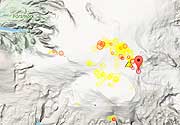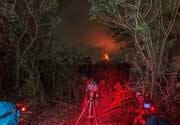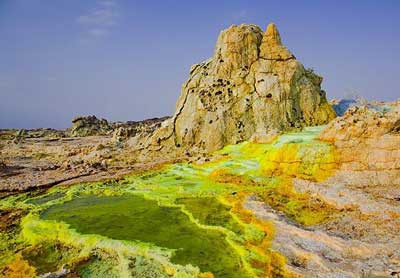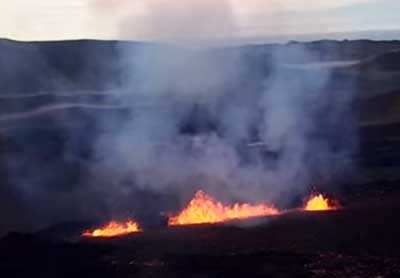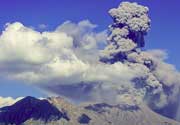Cosigüina Volcano
Nicaragua, 12.98°N / -87.57°W
Condition actuelle: normal / en sommeil (1 sur 5)
Cosigüina (or Cosegüina) volcano in western Nicaragua forms a large peninsula into the Gulf of Fonseca. The last eruption of the volcano was in 1959, but periods of unrest have occurred in recent years and in 1835, it produced the largest known historic eruption in Nicaragua.
The basaltic to andesitic volcano has a concentric structure consisting of the remnants of an large older cone, which collapsed more than 10,000 years ago and left a crescent-shaped somma rim on the outside. In the old caldera, a young cone has been built and is itself truncated by an elliptical 2.4 x 2 km wide and 500 m deep caldera. The young caldera crater contains a beautiful lake.
Most deposits inside the caldera are from lava flows, while ash and pumice layers predominate the outer flanks.
Eruptions du volcan Cosigüina: 1859, 1852, 1835, 1809, 1709, 1609 (?), around 1500
Derniers séismes proches
| Heure | Mag. / Profondeur | Distance / Lieu | |||
| 18 avril 21:03 (El Salvador) | 2.4 169 km | 23 km au nord-ouest | Info | ||
Eruptions du volcan Cosigüina
An earthquake swarm began on 4 September 2002, the first sign of unrest at the volcano in 27 years. The swarm consisted of 34 quakes, the largest being a magnitude 3.9 on 9 September. Volcanologists concluded that the swarm was caused by an intrusion of magma not followed by an eruption, because the distrubution and size of quakes was very unusual for tectonic activity and rather typical for volcano-tectonic ones.
On 2 August 1951, strong earthquakes from Cosiguina volcano opened a fracture that emitted a devastating flood of water inundating the small town of the Pacific coast port of Potosi. The town with its about 1,000 inhabitants was virtually destroyed and there were many casualties. ...plus d'info
The eruption from Cosigüina volcano in January 1835 was the largest historic eruption of Nicaragua and one of the largest in Central America since the Spanish colonization. It was a sub-plinian to plinian eruption (VEI 5) and ejected about 2.5 cubic km of magma, or 6 cubic km of tephra, mainly scoria and ash.
The explosion could be heard as far as Jamaika and Colombia, and ash fell in Mexico, Costa Rica and Jamaica. The ash plume blackened the sky in up to 150 km distance.
Deposits from the eruption form an extensive blanket of brown to gray andesitic scoria 35–60 cm thick at 5–10 km distance to the NW, NE and SE, while the prevailing winds prevented significant ash fall only to the SW.
The eruption produced small to medium-sized pyroclastic flows, which were deflected by the somma ridge to the N and SE. ...plus d'info







